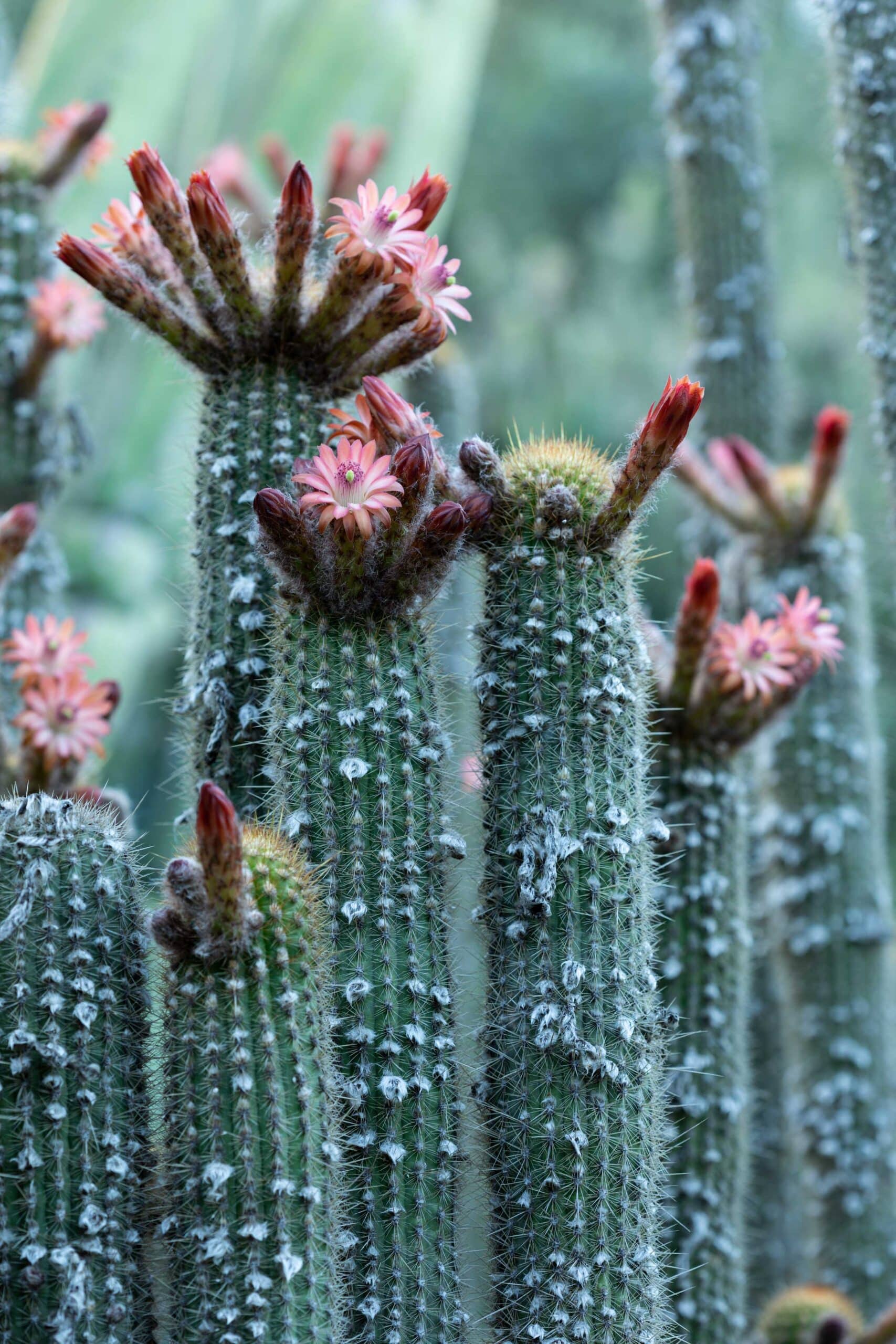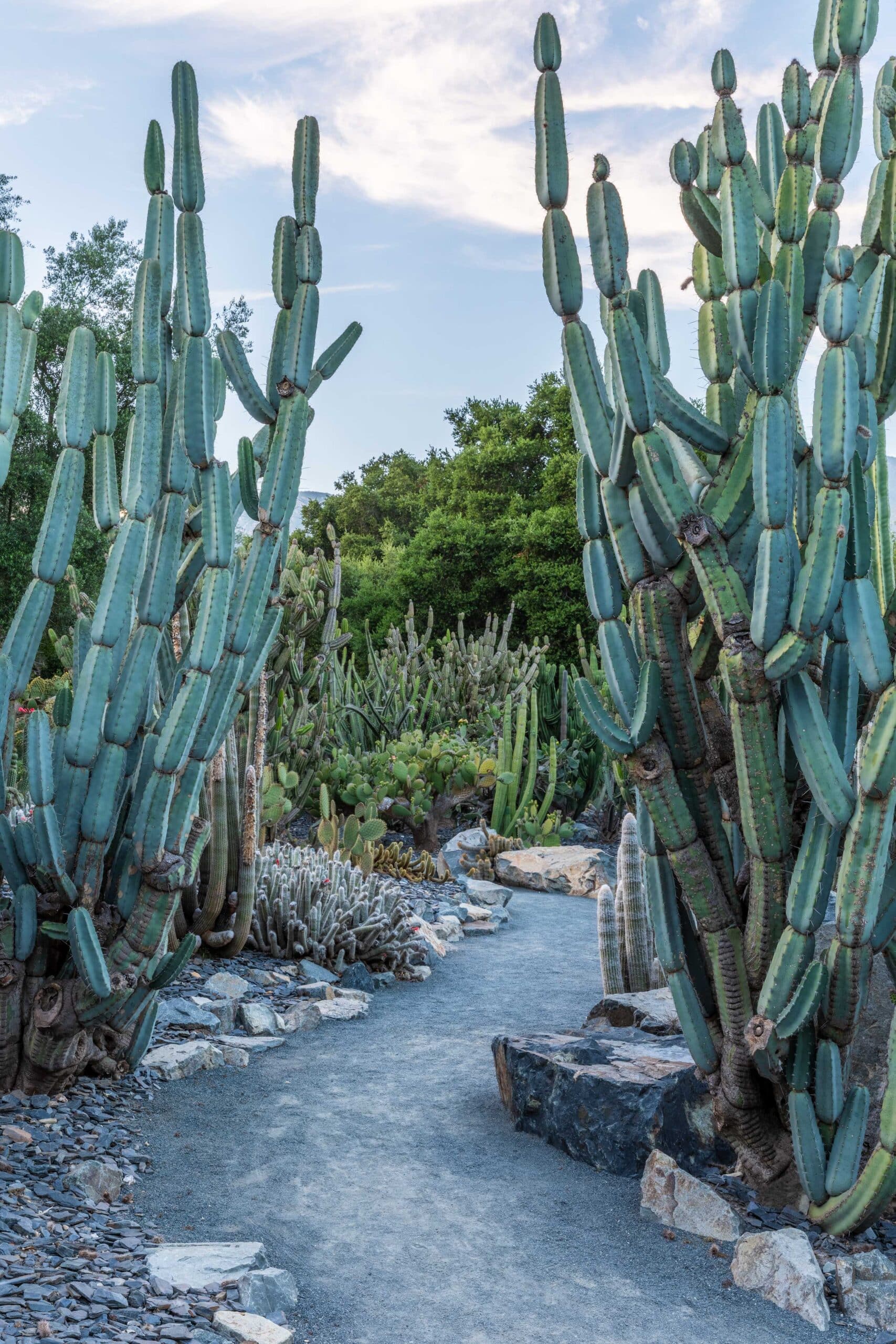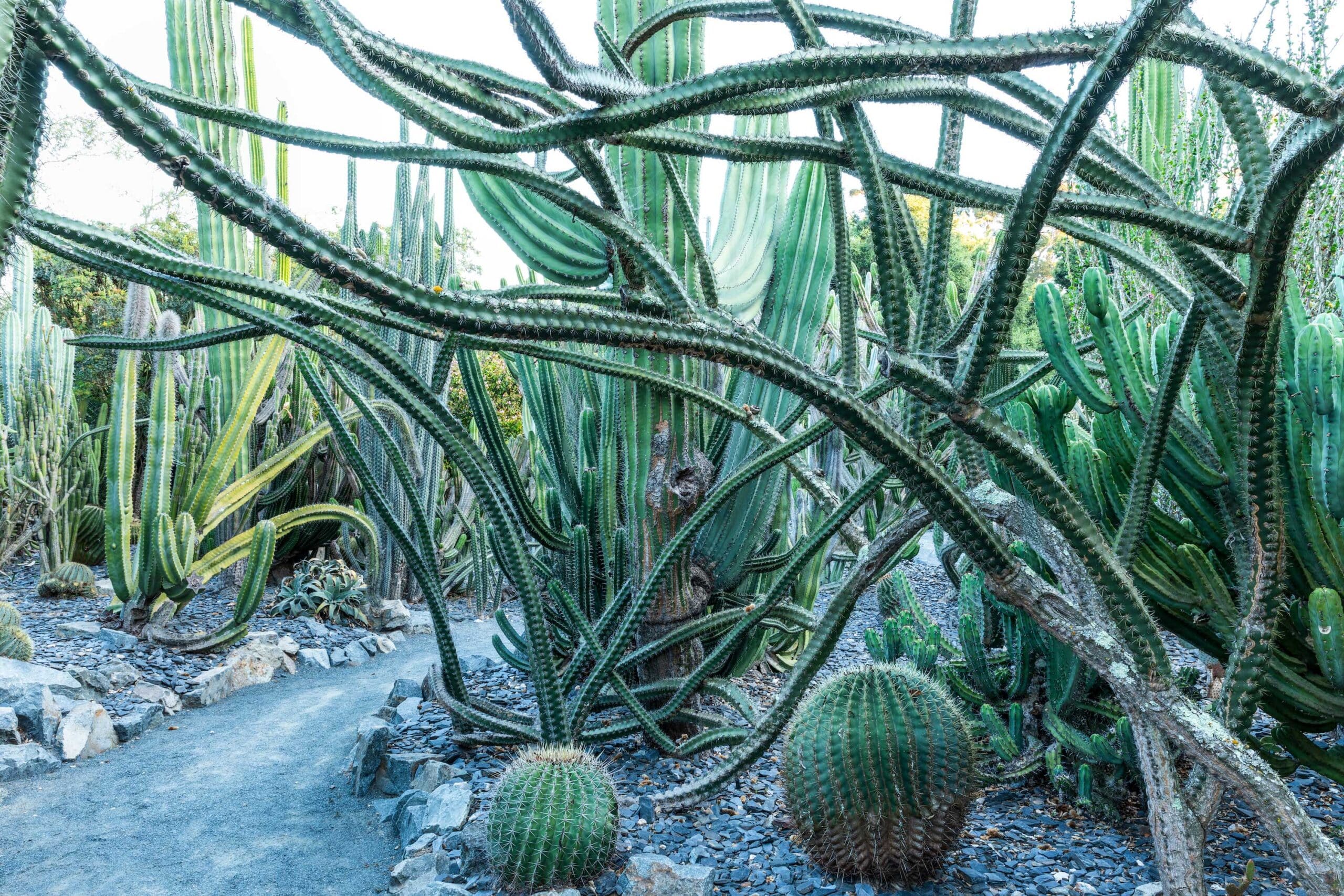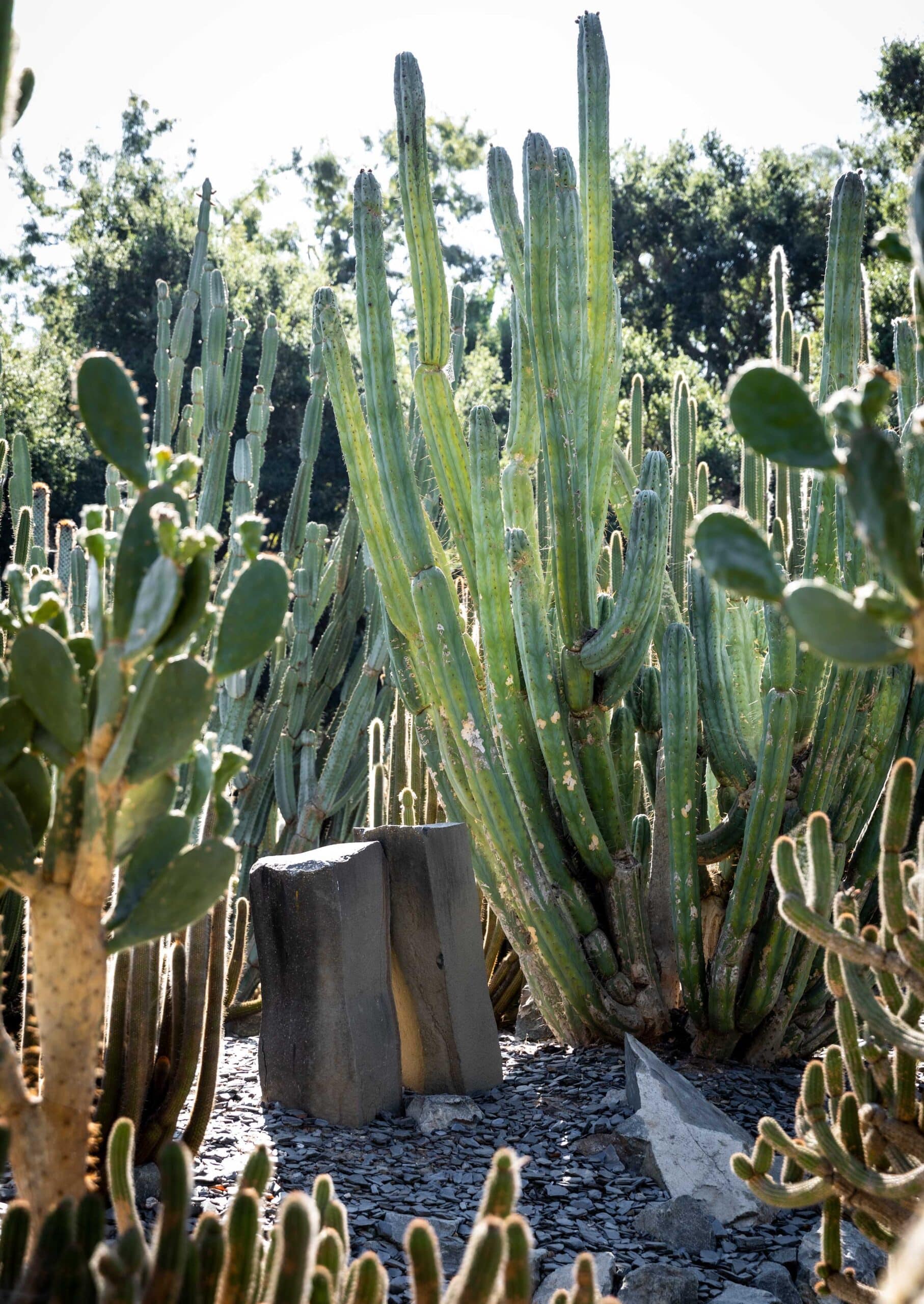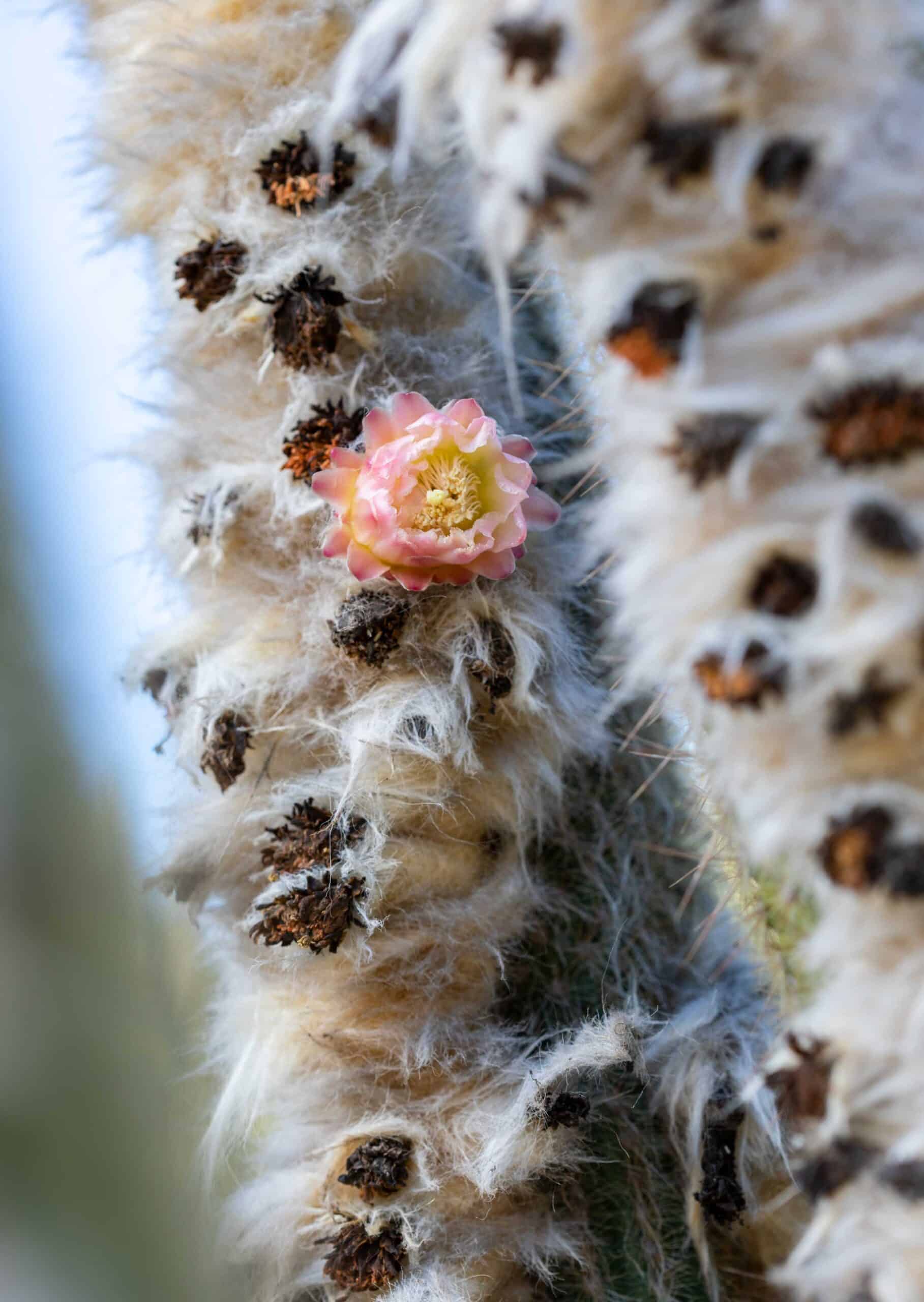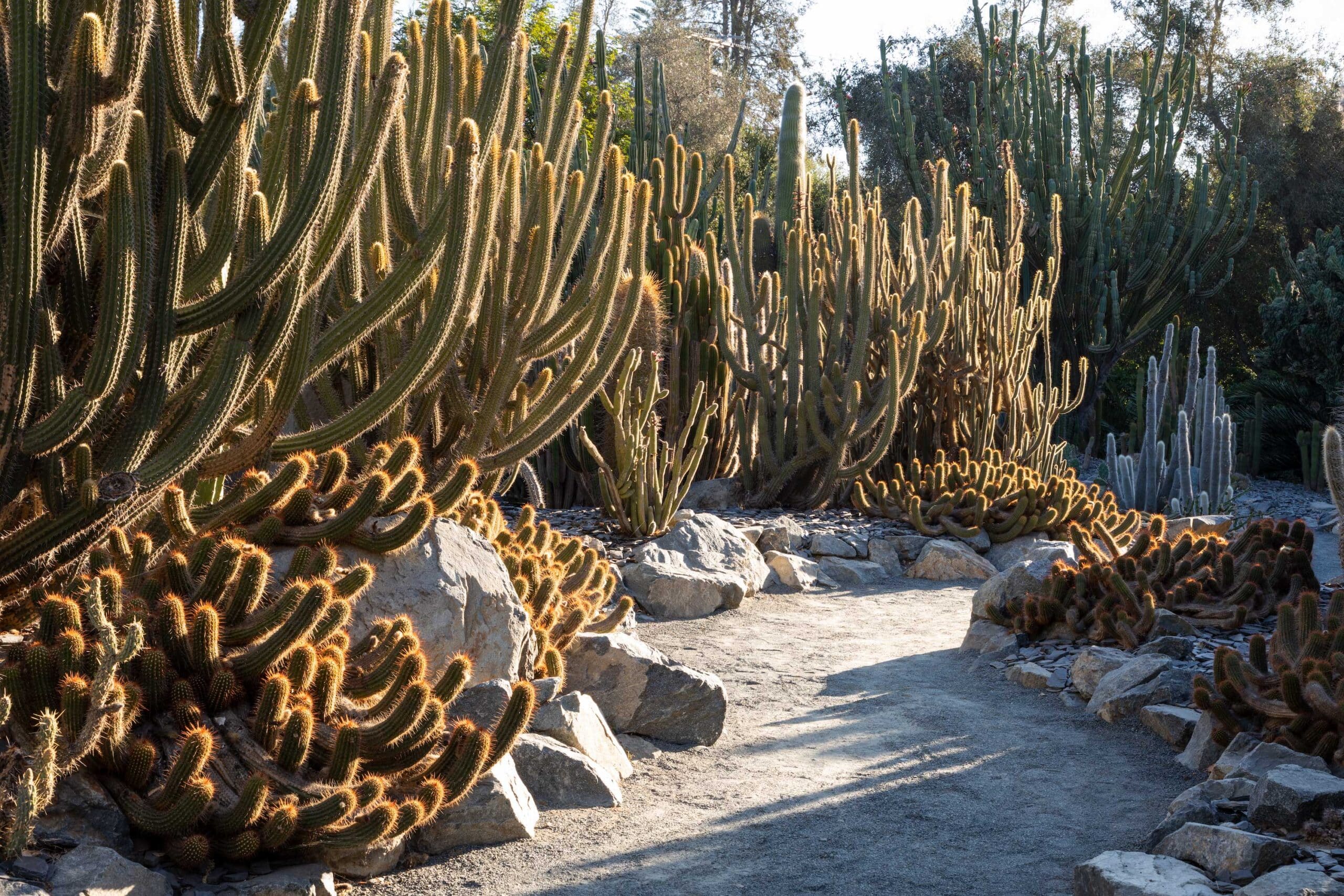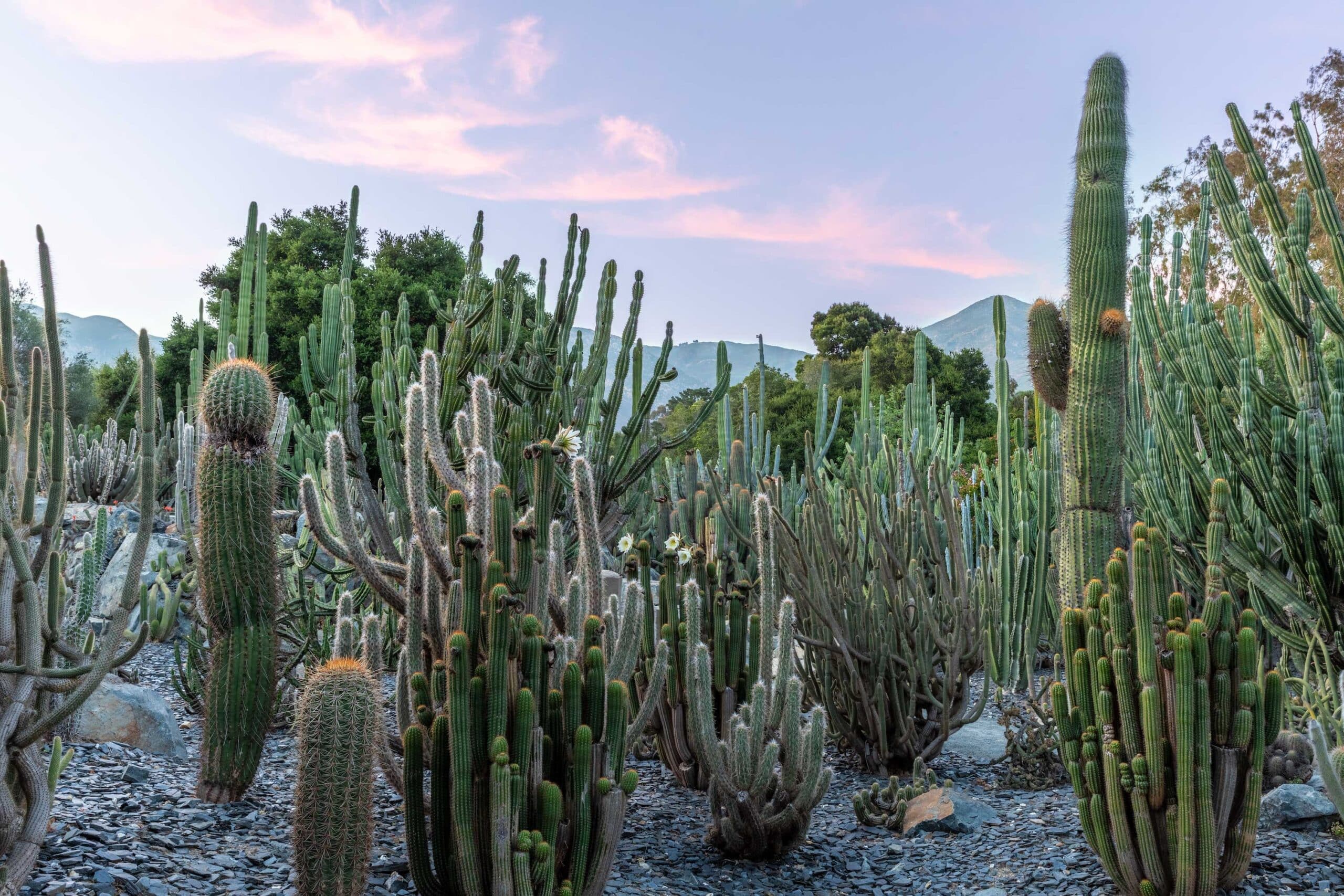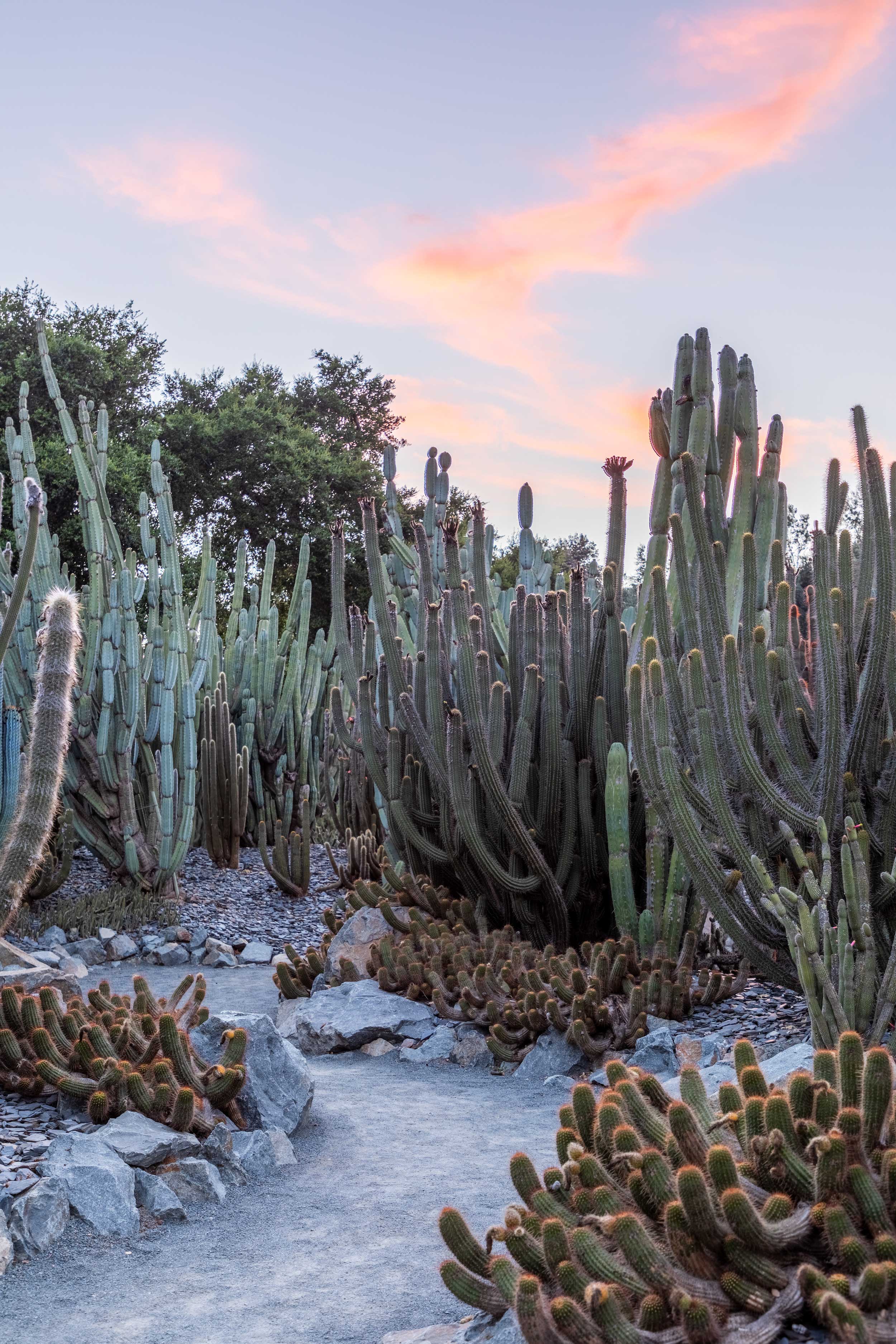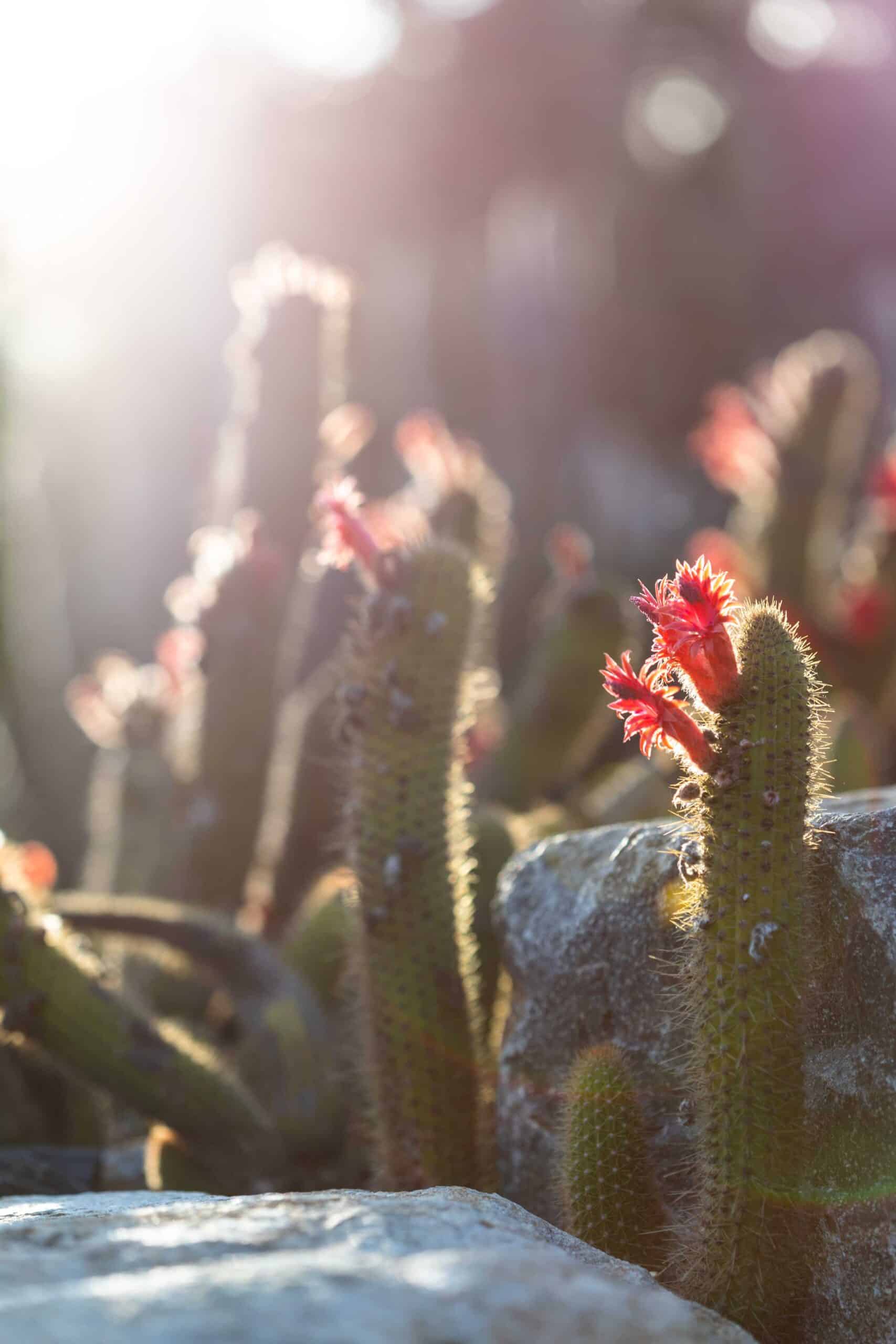Cactus Garden
Lotusland’s Cactus Garden includes more than 300 species of cacti
CACTUS GARDEN
From the Main Lawn, visitors enter the Cactus Garden beneath interweaving oak branches and palms. They are greeted by two basalt pillars, all forming a whimsical, yet powerful, entrance into another atmosphere. Black slate shards cover the entire ground adding to the mystery and splendor of this jaw-dropping garden. This significant collection was bequeathed to Lotusland in 1966 by Merritt Dunlap, a longtime friend of Madame Ganna Walska, and then transported to Lotusland beginning in 1999.
the
Noteworthy
Features
Totem Pole Cactus (Pachycereus schottii f. monstrosus)
The Pachycereus schottii f. monstrosus is a completely spineless form of cactus, the result of a naturally occurring mutation. Mutations are changes within DNA that are the building blocks of evolution. In the absence of spines, the areoles, small bumps that would otherwise hold the spines, create the appearance of faces, giving this cactus the common name “totem pole cactus.”
Galapagos Opuntia (Opuntia galapageia)
On the Galapagos Islands, giant tortoises and iguanas rely on cacti as a primary food source. Some Galapagos cacti, including this Opuntia galapageia, have grown to tree-like proportions to avoid over-predation. Tortoises must wait for fruits and pads to fall. Yet, in some parts of the Galapagos, tortoises have evolved special shell shapes that allow them to stretch up higher for food.
Creeping Devil Cactus (Stenocereus eruca)
It is easy to see how this low-lying cactus got its name. If the creeping devil appears to be in snake-like motion, that’s because it actually is. While most species of cactus grow vertically toward the sky, the creeping devil grows flat on the ground. Through time, the underside of the plant’s stem develops roots as the rear decays into the soil, providing nutrition for forward growth.
Ants and Cactus
Many species of cactus attract ants with extrafloral nectaries — nectar secretions that are not in a flower but rather on the stem of the cactus. While this provides benefits to the ants in the form of food, it also provides benefits to the cactus by inspiring the ants to protect their food source. The ants use their hive-minded nature to fight off other predators and invaders.
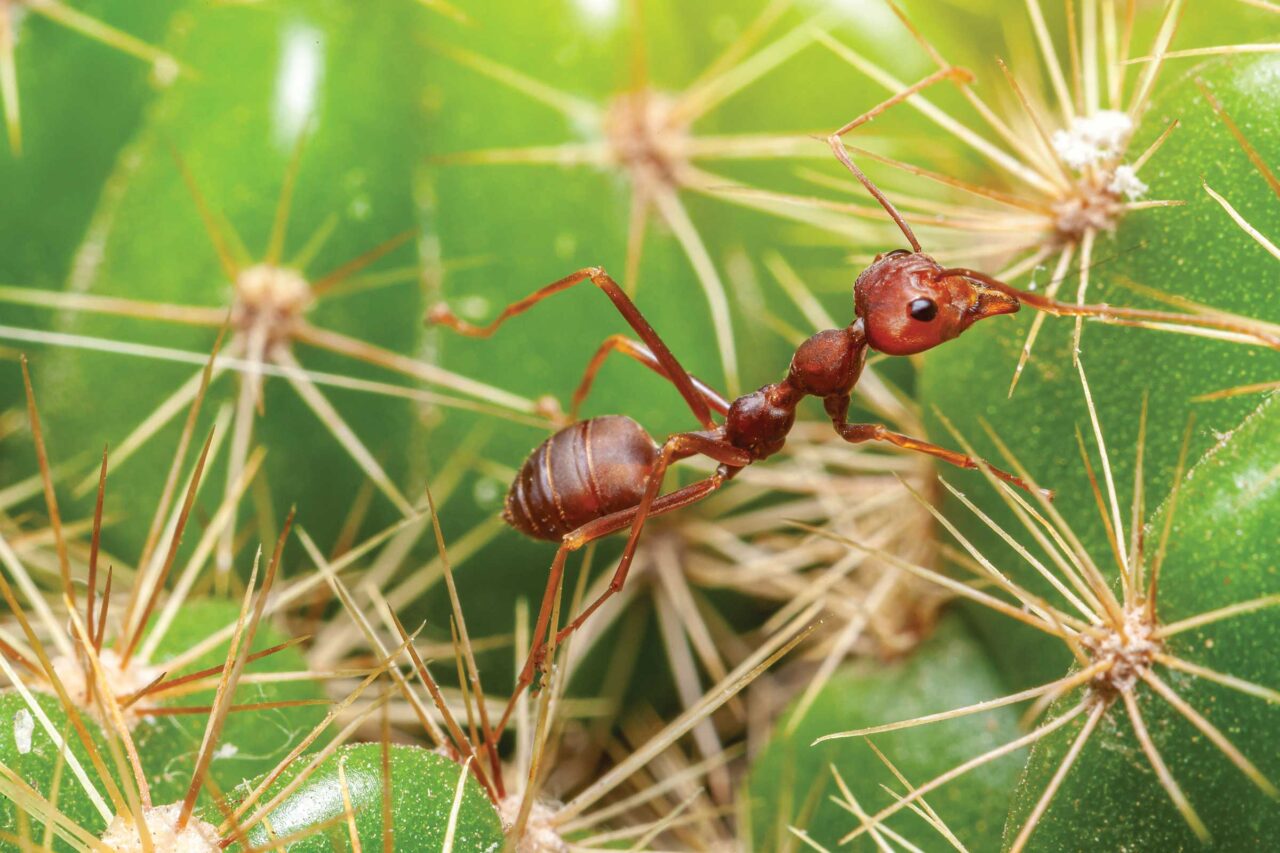
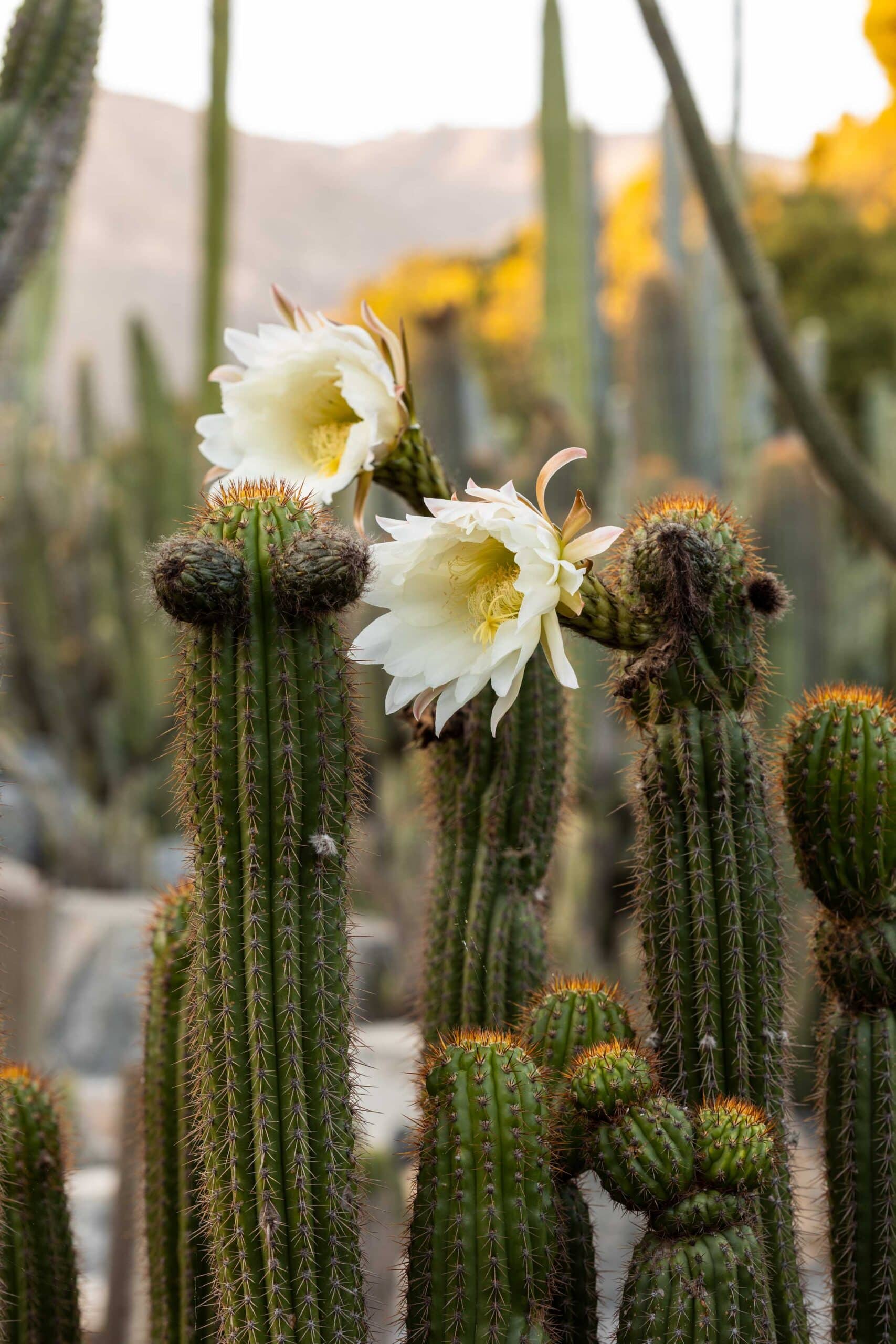
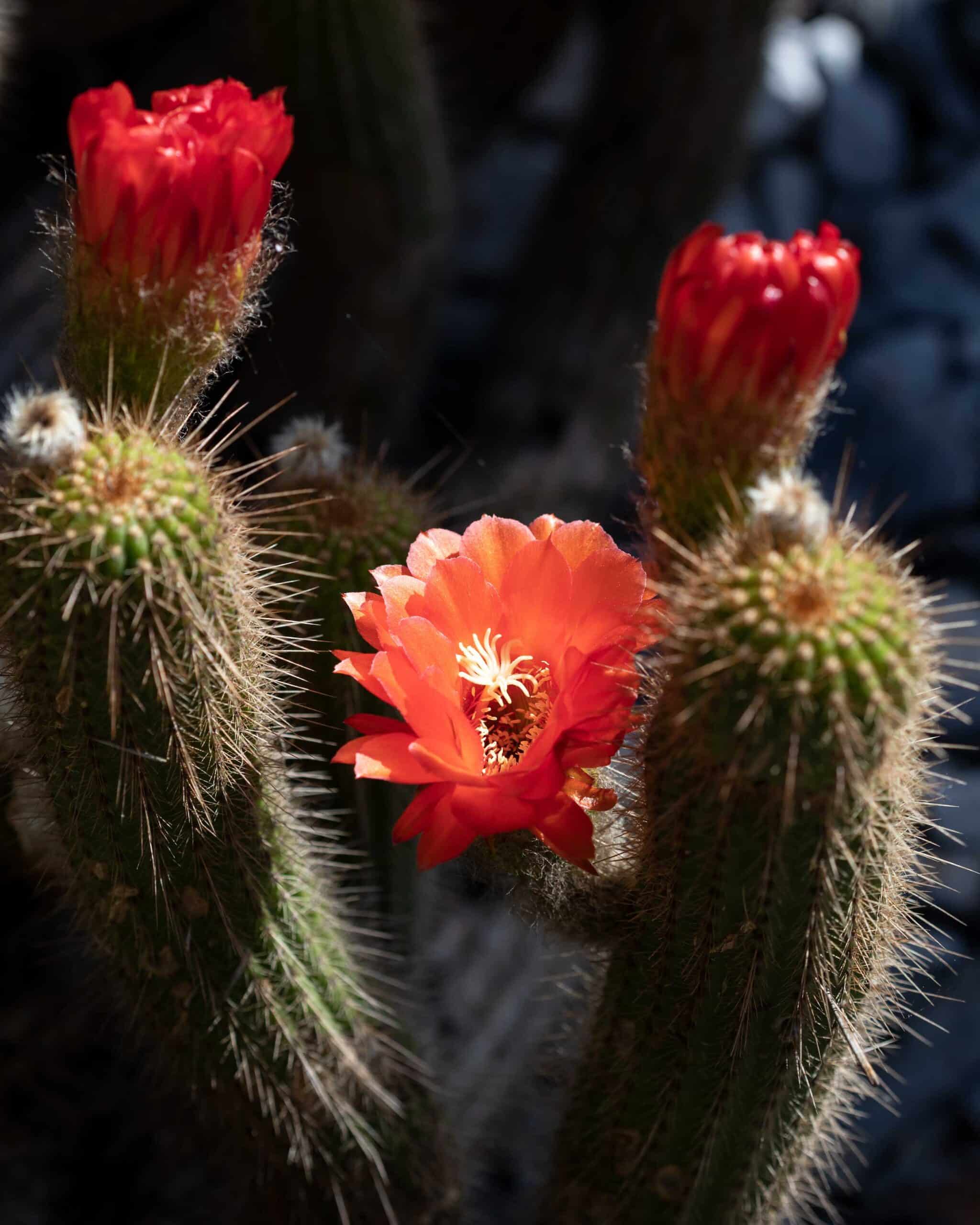
Notable Species
Pilosocereus species, Echinopsis spachiana, Echinopsis huascha, Opuntia endemic to the Galapagos Islands; several blue, sculptural species of Armatocereus from Peru; and a complete collection of the genus Weberbauerocereus. Dry-growing, terrestrial bromeliads, and several Agave species provide contrast and interest.
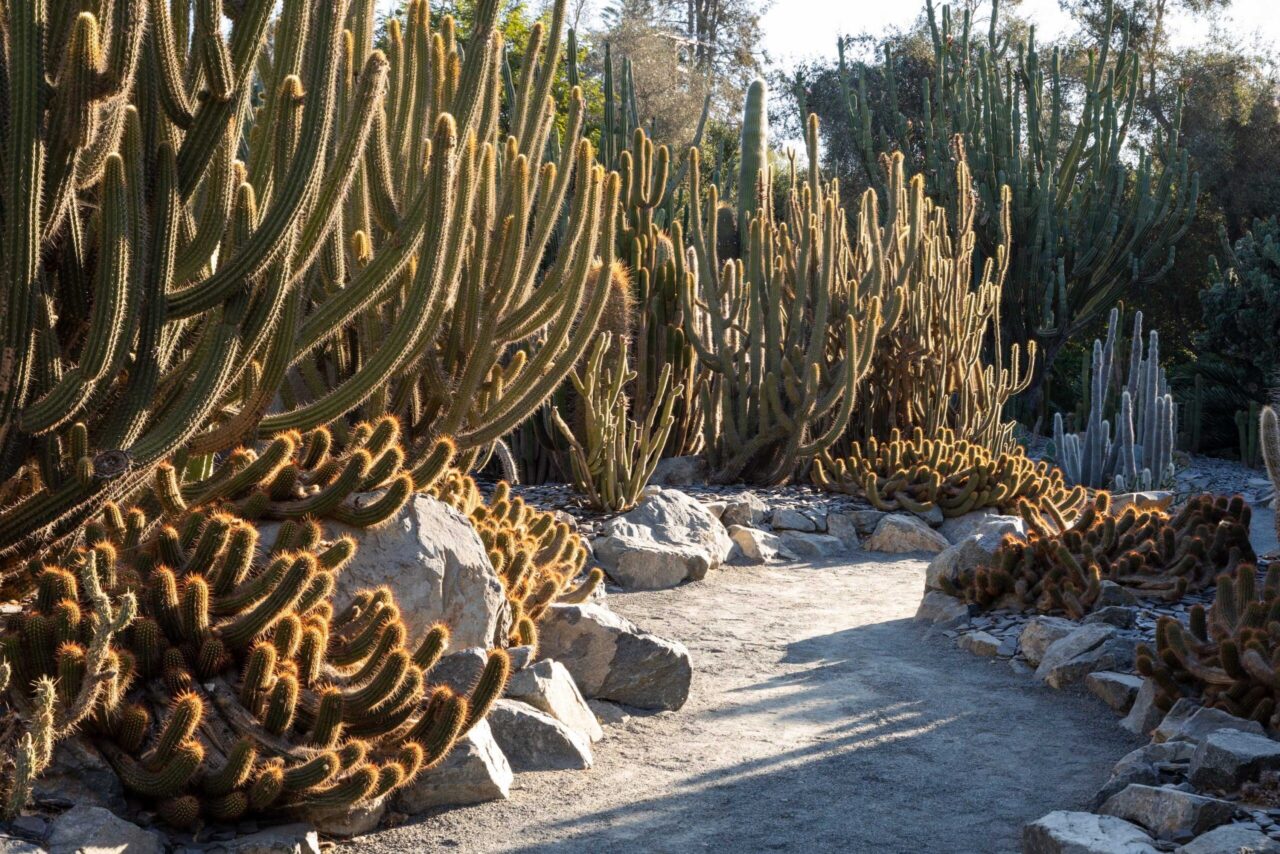
DID YOU KNOW?
When cacti are relocated it is recommended to maintain the same orientation they had previously because the southern-facing side of cacti becomes toughened in the sun, while the northern-facing side is susceptible to sunburn.
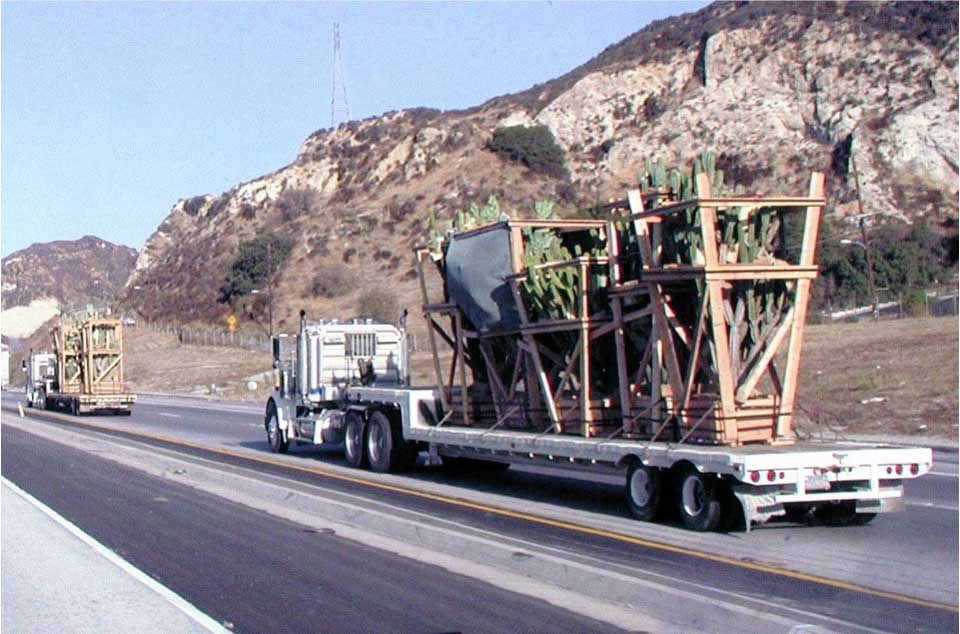

the History
The move from Dunlap’s home in San Diego to Lotusland was a sight to behold — stake-sided trucks with hundreds of towering cacti rolling down the highway, wooden boxes constructed around their excavated roots, and crates to hold their branches together. A total of 530 plants were moved from San Diego to Lotusland, each with its own meticulous record of its orientation to the sun for replanting. Three hundred tons of sun-soaking diorite, an igneous (meaning it comes from magma) rock, were used to create the beds, and formations of igneous basalt add drama to the entrance. The outstanding and unique hardscape and landscape were designed by acclaimed designer Eric Naglemann as a gift to the Garden. Today, Lotusland’s Cactus Garden includes more than 300 species of cacti grouped by their country of origin.


